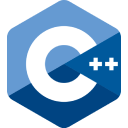
Advanced IFC Editor
An IFC viewer and editor with rendering features, that can use different lights, cameras, and materials.


C++ stands as a powerhouse in the world of programming, renowned for its efficiency and versatility. It’s the go-to language for performance-critical applications, from game development to high-frequency trading systems.
At SBP, we bring a wealth of experience and in-depth knowledge in C++ development. With years of hands-on experience in various industries, we ensure your project benefits from the best C++ practices and cutting-edge solutions.
Our custom C++ software development services are tailored to meet the unique requirements of your business. We specialize in creating high-performance applications that are both scalable and secure, ensuring that your software not only meets but exceeds business expectations.
We offer specialized C++ systems programming services, focusing on creating robust and efficient system-level applications. Our expertise includes developing operating systems, file systems, and network protocols that are fast, reliable, and secure.
We excel in developing C++ software for embedded systems. Our expertise encompasses creating compact, efficient, and reliable software solutions for a range of hardware platforms, ensuring seamless integration and optimal performance in constrained environments.
Embrace the power of cross-platform development with our C++ services. We design and develop applications that run seamlessly on multiple platforms, ensuring consistency and functionality across Windows, Linux, macOS, and more.
Leverage our C++ game development expertise to create immersive and high-performance gaming experiences. Our team is adept at harnessing the power of C++ to build complex game engines, realistic graphics, and responsive gameplay mechanics.
We develop high-quality, efficient digital media applications such as video streaming platforms, audio processing tools, and image rendering software, utilizing C++ to ensure high performance and scalability.
Our team excels in developing standalone modules using C++. Whether you need a high-performance algorithm, a data processing module, or a specific utility, we can build it with the efficiency and power that C++ provides.
We don't just build software; we refine it. Our C++ software enhancement and optimization services are designed to improve the performance, scalability, and security of your existing C++ applications.
We offer comprehensive maintenance and optimization for existing C++ applications. This includes code reviews, performance tuning, and updates to ensure your software remains efficient and relevant in the evolving tech landscape.

An IFC viewer and editor with rendering features, that can use different lights, cameras, and materials.

Solution comprised of a mobile, server and web app, that helps telecommunication providers monitor key performance indicators in their networks.
Our team consists of skilled software engineers, designers, and project managers with diverse expertise in various technologies and industries. This enables us to handle projects across domains, addressing your specific requirements effectively.
With our flexible partnership, you can easily scale your workforce based on your needs. Whether you need to expand or reduce resources, we provide rapid elasticity for optimal resource allocation and cost-effectiveness.
Embracing Agile principles, we adapt quickly to evolving project requirements, ensuring flexibility, enhanced product quality, and improved customer satisfaction. Through regular iterations and feedback loops, we align software solutions with your evolving business needs.
Our dedicated quality assurance team rigorously tests every aspect of your software to ensure optimal performance, security, and reliability. We adhere to industry-standard QA processes, guaranteeing stable and scalable software solutions.
Our meticulous handover process ensures a smooth ramp-up, facilitating efficient knowledge transfer within your project team. With clear communication channels and collaborative workflows, we align our efforts with your project goals from the start.
Experience seamless and transparent communication channels with us. We provide daily customer support through email, phone, and instant messaging. Our online system for issue reporting, bug tracking, and feature requesting ensures prompt feedback and swift resolution.
As an ISO 9001 and ISO 27001 certified company, we adhere to internationally recognized quality and information security standards, ensuring the delivery of reliable products and solutions.
Count on the stability of our services, even during team members’ absences. Our processes ensure continuous development and support, keeping your projects on track and maintaining momentum.
C++ is synonymous with performance. It provides unparalleled control over system resources, allowing for the development of highly efficient applications. This makes it ideal for projects where speed and resource management are critical.
C++ supports object-oriented programming, which aids in creating modular, reusable code. This approach enhances the maintainability and scalability of software, making it easier to manage large and complex projects.
C++ provides close-to-hardware programming capabilities, which is essential for developing system software and embedded systems. This direct hardware control results in faster execution and more efficient resource usage.
C++ gives developers direct control over memory management, which is crucial for optimizing performance and efficiency. This level of control allows for fine-tuning the allocation and deallocation of memory resources, essential in high-performance and real-time applications.
C++ allows for low-level manipulation of data, providing developers with the ability to optimize for speed and memory usage. This capability is particularly valuable in system programming, game development, and applications requiring direct interaction with the hardware or real-time processing.
Code written in C++ can be used on multiple platforms without significant changes. This cross-platform capability makes it an excellent choice for applications that need to operate across various operating systems and hardware environments.
Bucharest, Romania
123-129 Valea Oltului Street
+40 373 78 02 03 | hello@sbp-romania.com
Amsterdam, The Netherlands
61-105 Weesperstraat, 1018 VN
+31 20 893 2093 | hallo@sbp-romania.com